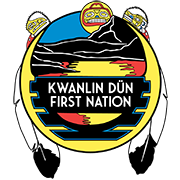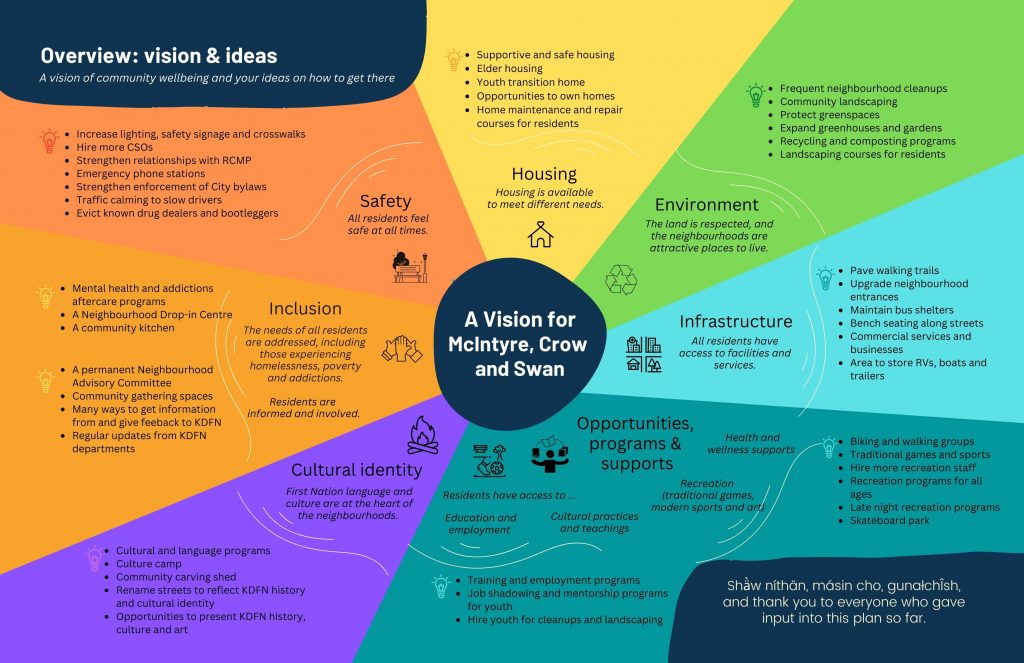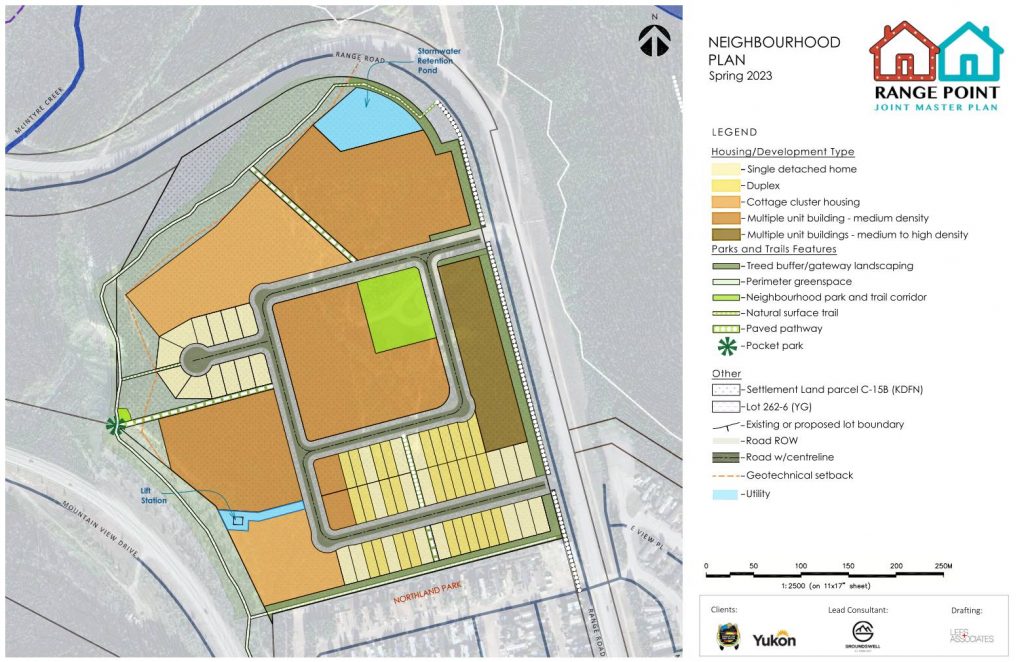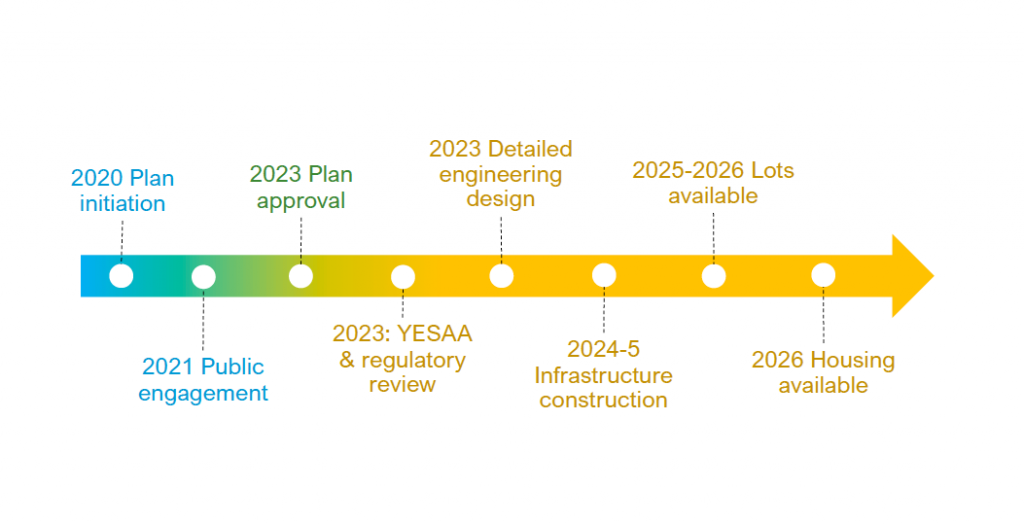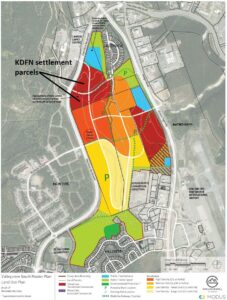KDFN Council has created a committee for the McIntyre, Crow & Swan Neighbourhood Plan. The committee will help develop the neighbourhood plan and lead community engagement.
For more project information, or to learn how you can participate, please contact Community Engagement Planner Karee Vallevand by phone: 867-334-3569 or email: Karee.Vallevand@kdfn.net.
What is a neighbourhood plan?
A neighbourhood plan helps communities plan and develop the area where they live and work. It guides where new homes, shops, offices, and other development should be built, how green spaces should be protected, and identifies areas for recreation.
What area is being planned?
The focus of the plan is the McIntyre Subdivision and Crow and Swan streets.
Why is a plan needed?
The neighbourhoods are growing and need more housing and public service infrastructure. KDFN is developing a neighbourhood plan to help guide future development in the area.
What has happened so far?
The McIntyre, Crow & Swan Neighbourhood Planning Committee has held three workshops at Nàkwät’à Kų̀ Potlatch House, and a neighbourhood plan survey was mailed to all KDFN households and made available online. The input received is being put into a draft plan for the neighbourhoods. It will be reviewed by the committee and presented to the community for feedback.
Committee members
A committee for the McIntyre, Crow & Swan Neighbourhood Plan was created by KDFN Council. The committee will help develop the neighbourhood plan and lead community engagement.
Committee Members:
- Cheyenne Bradley
- Carissa Waugh
- Dianne Smith
- Katelyn Dawson
- Hank Henry
McIntyre, Crow & Swan Neighbourhood Plan Survey
A neighbourhood plan survey was mailed to all KDFN households and made available online. The input received is being put into a draft plan for the neighbourhoods. It will be reviewed by the committee and presented to the community for feedback.
Poster contest
The committee invited KDFN Citizens and Beneficiaries to create a poster illustrating their vision for the future of McIntyre Subdivision and Crow and Swan Streets in July.
Congratulations to Rae Mombourquette who had the winning poster.
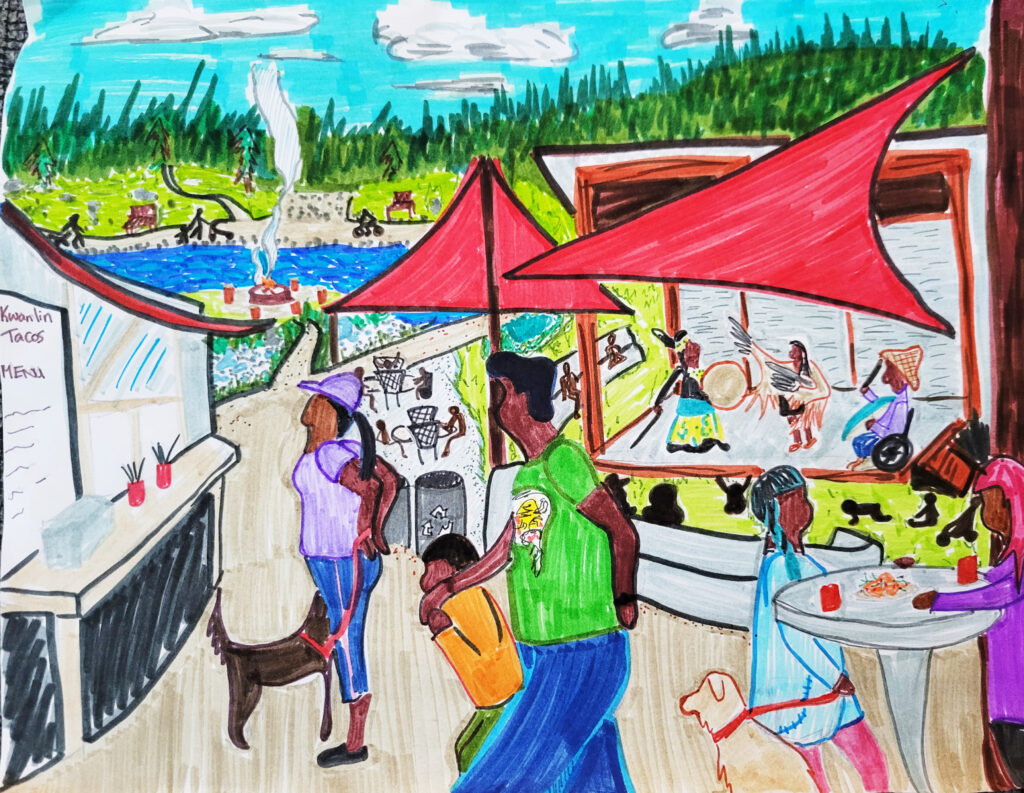
From left to right: The Kwanlin Taco Food Truck is serving bannock tacos. A woman looks over the menu with a dog on a leash. There are trash and recycling cans and seating everywhere. A bike path meanders over to the social fire pit overlooking the newly created stocked Kwanlin Lake. In the background you can see the lake front trail with benches and rock nodes.
Red sails create a weather shade over the outdoor stage. Cement amphitheatre provide seating areas and clean grass allows babies to play and dance in front of the stage. Standing tables let a pair of youth share nachos and soda while a dad walks his son to the public washrooms. There is seating everywhere. Dogs are on leashes, there is activity, and people fill the pathways. The space is safe and clean, full of activity and interest.
Things missing: lighting, dog poop bag stations, a coffee station, and people fishing in the lake.
Rae envisions this in the area across from where the ball diamonds will go, from Murphy to Hanna.
Next steps
Consultation on the neighbourhood plan is ongoing. Once completed, the draft plan will be reviewed by the McIntyre, Crow & Swan Neighbourhood Planning Committee and presented to the community for feedback.
McIntyre Subdivision and Crow and Swan Street Map
Neighbourhood Plan Map
What we heard so far – updated April 2023
READ THE FULL REPORT: Community Engagement Report: What we Heard
So far, feedback has focused on:
- Identifying issues; and
- A vision for the future of the neighbourhoods.
Most Beneficiaries and Citizens who responded to the survey believe the neighbourhoods are changing for the better.
For example, respondents noted:
- a sense of community;
- location near schools and essential services;
- affordable rent;
- Community Safety Officers and other KDFN programs and services.
There were also many concerns raised, for example:
- Crime, bullying and harassment
- A shortage of housing / supportive housing
- Alcohol, drugs and parties
- Loose dogs / poor enforcement of some bylaws
- The need for community gathering spaces
- Access to recreation and cultural activities

